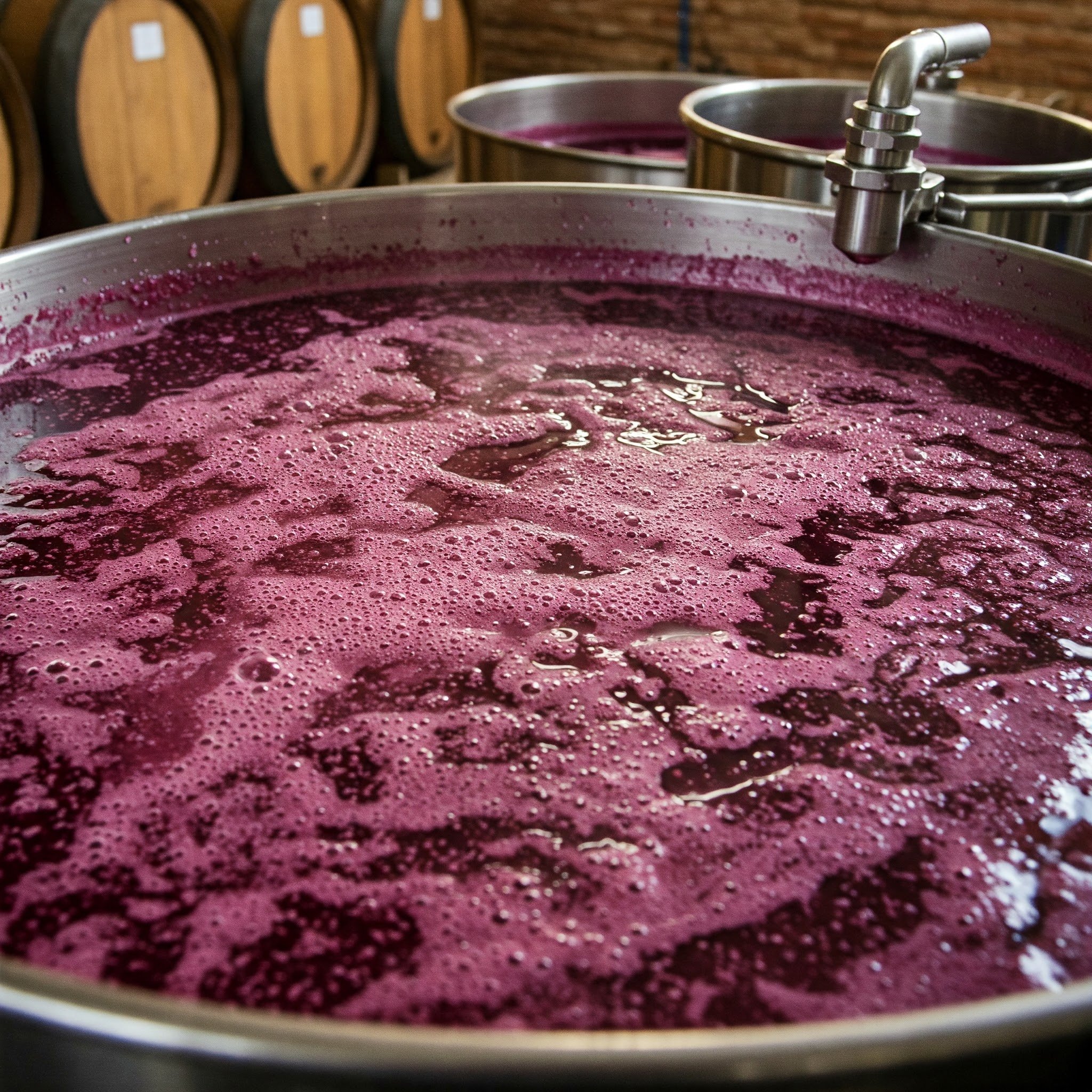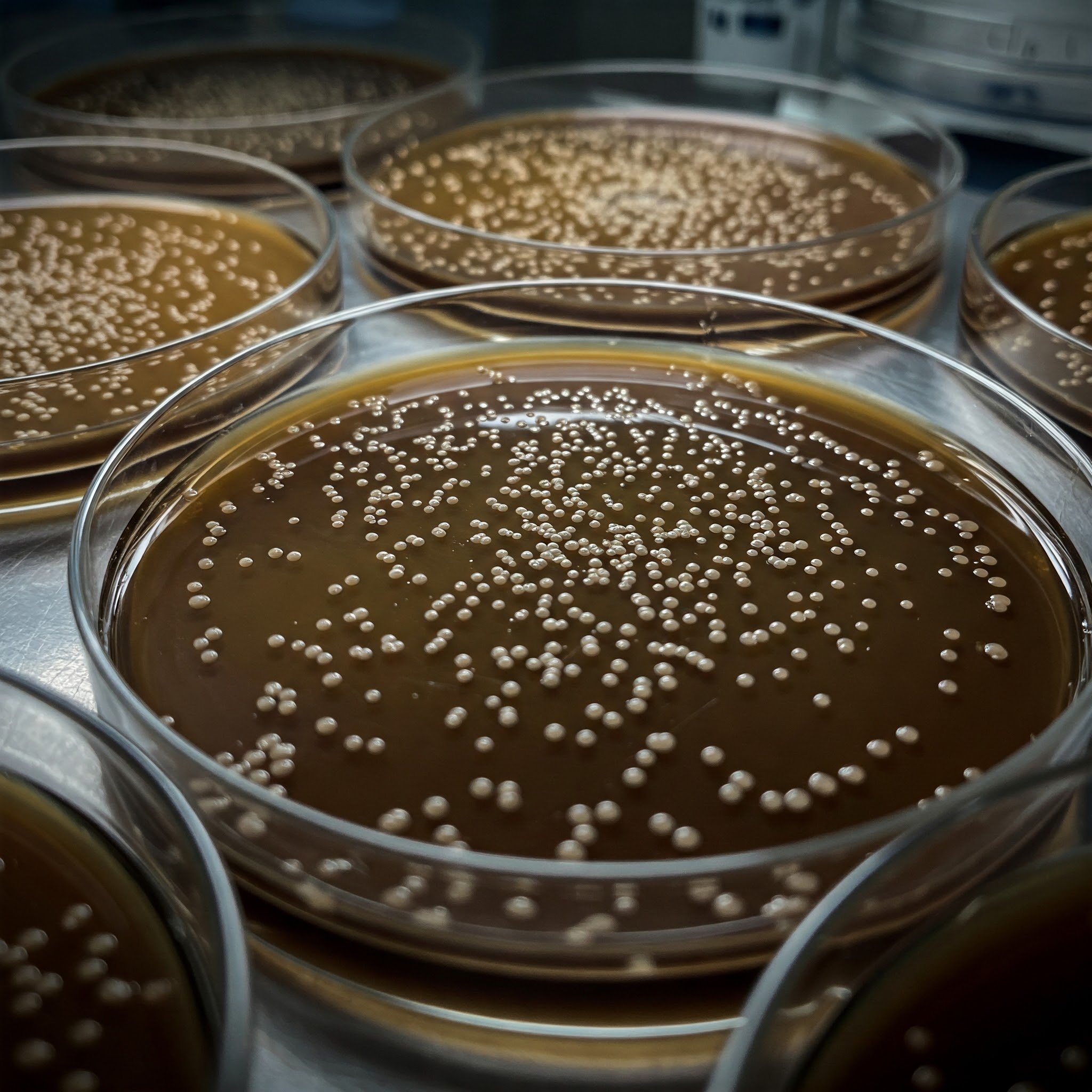Using biotechnology to lower alcohol in wine
Winemakers face the constant challenge of balancing market demands, production costs, and producing high-quality, drinkable wines. This challenge is further complicated by rising production costs and the effects of climate change, which leads to warmer temperatures and riper grapes with higher sugar and lower natural acid levels. This often results in wines with high alcohol levels and the need for acid additions.
How biotechnology offers a smart solution to these challenges through the use of hybrid yeast strains? According to Paul K. Bowyer(1) and Galdric Nogues(2), these strains, produced through careful selection and breeding, can help manage sugar metabolism during fermentation to reduce alcohol content and increase beneficial compounds like glycerol and L-malic acid.
One example is Excellence Celsius, a hybrid yeast developed using quantitative trait locus (QTL) targeting. Trials with this yeast have shown reliable reductions in alcohol content (around 0.5%) and positive impacts on pH and titratable acidity, ultimately contributing to a more balanced and cost-effective wine production.
Biotechnology, particularly through advanced yeast selection, provides winemakers with effective tools to address the challenges of climate change and consumer preferences, enabling the production of quality wines with lower alcohol levels and improved balance.
QTL stands for Quantitative Trait Locus. It's a technique used in the modern selection of hybrid yeasts.
Here's a breakdown of what that means
Quantitative Trait: A measurable characteristic or phenotype (e.g., alcohol production, acid production) that varies among individuals.
Locus: A specific location on a chromosome where a gene or a DNA sequence influencing that trait is located.
In essence, QTL analysis involves:
1. Identifying specific traits (phenotypes) that are desirable in wine yeast.
2. Correlating those traits with specific DNA markers (genotypes).
This allows for a more efficient way to breed and select yeast strains with the desired characteristics, like lower alcohol production, compared to traditional breeding methods.
The process of selecting hybrid yeast strains to achieve specific characteristics in the final wine product. Here's a summary of the key steps and considerations:
1. Parental Strain Selection: The process begins with carefully selecting parent yeast strains that possess desirable traits. These traits might include efficient sugar-to-ethanol conversion, specific aroma production, or tolerance to certain conditions.
2. Forced Breeding: The selected parent strains are then subjected to forced breeding under controlled laboratory conditions. This encourages the parent strains to reproduce and create offspring with a mix of their genetic material.
3. Progeny Strain Evaluation: The resulting progeny strains (the offspring of the parent yeasts) are then evaluated for the desired characteristics. This is a critical step in identifying the strains that have inherited the traits that will lead to the desired final wine product.
4. QTL Targeting: Modern methods, like QTL (Quantitative Trait Locus) targeting, are used to enhance the efficiency of this selection. QTL helps to link specific traits (e.g., lower alcohol production, altered acidity) to specific genes or DNA markers. This allows breeders to more precisely select strains with the genetic makeup that will produce the desired outcome in the wine.
5. Backcrossing: In some cases, parental backcrossing is used. This involves crossing a progeny strain back with one of its parent strains to further refine its characteristics or enhance the presence of a specific trait.
In essence, the selection of hybrid yeast strains is a process of:
1. Identifying the desired characteristics for the final wine.
2. Selecting parent yeast strains that contribute to those characteristics.
3. Breeding those strains.
4. Analyzing the resulting offspring to find the ideal combination of traits.
By carefully controlling this process, winemakers can use hybrid yeast to influence the chemical composition and sensory profile of the wine, including alcohol level, acidity, aroma, and flavor.
(1) Paul K. Bowyer, BHF Technologies
(2) Galdric Nogues, Lamothe-Abiet
釀酒師們一直面臨著平衡市場需求、生產成本和生產高品質、適飲葡萄酒的挑戰 。氣候變遷導致氣溫升高,葡萄成熟度提高,糖分含量升高,天然酸度降低,使得這項挑戰變得更加複雜,同時也推高了生產成本 。這通常會導致葡萄酒酒精含量偏高,需要添加酸 。生物技術可以通過使用雜交酵母菌株為這些挑戰提供智能解決方案 。
這些通過仔細選擇和育種產生的菌株,有助於控制發酵過程中的糖代謝,從而降低酒精含量,增加有益化合物,如甘油和 L-蘋果酸 。其中一個例子是使用定量性狀基因座 (QTL) 定向技術開發的雜交酵母菌株 Excellence Celsius 。該酵母的試驗顯示,酒精含量可靠地降低了約 0.5%,並對 pH 值和可滴定酸度產生了積極影響,最終有助於實現更平衡且具有成本效益的葡萄酒生產 。
QTL 代表定量性狀基因座。這是一種用於現代雜交酵母選擇的技術 。
定量性狀:
在個體之間存在差異的可測量特徵或表型(例如,酒精產量、酸產量)。
基因座:染色體上影響該性狀的基因或 DNA 列的特定位置 。
本質上,QTL 分析包括:
1. 鑑定葡萄酒酵母中所需的特定性狀(表型)。
2. 將這些性狀與特定的 DNA 標記(基因型)相關聯 。與傳統育種方法相比,這提供了一種更有效的方法來育種和選擇具有所需特徵(如較低酒精產量)的酵母菌株 。
親本菌株選擇:該過程首先要仔細選擇具有所需特徵的親本酵母菌株 。
這些特徵可能包括高效的糖乙醇轉化率、特定的香氣產生或對某些條件的耐受性 。
強制育種:然後在受控的實驗室條件下對選擇的親本菌株進行強制育種 。
這鼓勵親本菌株繁殖並產生具有其遺傳物質混合物的後代 。
子代菌株評估:然後評估產生的子代菌株(親本酵母的後代)是否具有所需的特徵 。
這是識別具有遺傳特徵的菌株的關鍵步驟,這些遺傳特徵將產生所需的最終葡萄酒產品 。
QTL 定向:QTL(定量性狀基因座)定向等現代方法用於提高這種選擇的效率 。
QTL 有助於將特定性狀(例如,較低的酒精產量、改變的酸度)與特定的基因或 DNA 標記聯繫起來 。
這使得育種者能夠更精確地選擇具有產生葡萄酒所需結果的遺傳構成的菌株 。
回交:在某些情況下,使用親本回交。這涉及將子代菌株與其親本菌株之一回交,以進一步完善其特徵或增強特定性狀的存在 。
本質上,雜交酵母菌株的選擇是一個以下過程:
1. 確定最終葡萄酒所需的特徵 。
2.選擇有助於這些特徵的親本酵母菌株
3. 育種這些菌株 。
4. 分析產生的後代,以找到理想的性狀組合 。
通過仔細控制這個過程,釀酒師可以使用雜交酵母來影響葡萄酒的化學成分和感官特性,包括酒精含量、酸度、香風味 。

